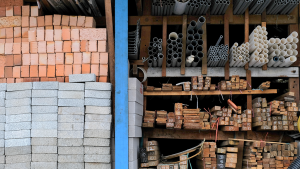Canada will face a shortage of at least 10,000 workers in nationally recognized Red Seal trades over the next five years — a deficit that swells tenfold when 144 provincially regulated trades are included, according to a new report that was released recently by the thought leadership group at Royal Bank of Canada (RBC).
Meanwhile, 25 per cent of Canada’s four million tradespeople will need to upgrade their skills within the same period as demand for digital and soft skills like creativity and problem-solving is expected to rise significantly.
The report, called Powering Up: Preparing Canada’s skilled trades for a post-pandemic economy, states that educators, employers and policymakers will need to address chronic problems in the trades pipeline, tap into underused pools of talent and address a widening digital skills gap amid rapid technological advances in the workplace.
“The rebuilding that Canada needs to do post-pandemic and to address other priorities like climate change will be built by skilled tradespeople, so skilled tradespeople with the right skills are going to be important for Canada’s recovery,” explains Cynthia Leach, senior director of economic thought leadership at RBC.
“We’re going to need to not only recruit successfully into the skilled trades, but equip those skilled trades with the technology and the skills they’ll need in the future.”
More than 700,000 skilled tradespeople are expected to retire by 2028. However, the report indicates an outdated perception of the trades has hobbled recruitment efforts.
Women, for example, made up just 11 per cent of new registrants for apprenticeship programs in 2019 and continue to represent less than four per cent of workers in the most in-demand trades. Immigrants comprised 8.7 per cent of apprentices despite accounting for more than 20 per cent of the population.
Canada is falling short of its goal to bring in 3,000 skilled tradespeople annually through immigration, admitting 2,365 newcomers in 2019 through the federal Skilled Trades Program, according to the report.
Over the next five years, trades shortages are expected to be most acute in Alberta, the Atlantic provinces, B.C. and Saskatchewan while Ontario and Manitoba will be relatively balanced. Quebec will have a surplus. The report notes, though, that severe shortfalls persist in individual trades and within specific sub-regions.
According to the report, technological change, accelerated by the pandemic, has transformed not only the tools available to tradespeople, but the skills needed to operate them, with 3D technology and digital and diagnostic tools becoming more commonplace in the construction and manufacturing sectors.
Soft skills, like critical thinking, curiosity, creativity, problem-solving and communication, are more important than ever in an economy that demands collaboration across sectors, the report states. They will increase in importance as the fourth industrial revolution unfolds but won’t replace traditional technical ability.
Leach says as machines become more advanced, they will be relied on to do more of the routine tasks done by people. However, the so-called “human skills” will still be important.
“It means the value that we as workers provide are inherently human skills, the softer professional skills like collaboration and listening, and problem-solving. Technological skills are absolutely important to the skilled trades. They are partly the function of what that work is, but we can’t forget the other side of it, the human skills.”
There are worries that although more people may be convinced to take up the tools, it might not be enough. In manufacturing alone, one-quarter of the workforce is aged 55 or older, and less than 10 per cent of workers are under the age of 25.
Even before the pandemic disrupted training programs and upended labour markets, Canada struggled to maintain a steady flow of skilled tradespeople.
The report states attempts to attract young people, women and immigrants to the field have repeatedly fallen short, leaving many trades unable to replenish vacancies left by retiring workers.
The Canadian Apprenticeship Forum estimates Canada will face a gap of more than 60,000 registered apprentices by 2025, after new registrations plunged 37 per cent last year.
Leach says the economic recovery of the country will be in jeopardy if more skilled trades are not recruited.
“Skilled trades are very important to building all of the infrastructure that the economy relies on. To the extent that the sector doesn’t keep pace with the evolving skills demand of that space, then we could be challenged as a country to achieve these infrastructure and economic growth goals.”
Recruiting the workforce of the future will mean addressing core challenges, including recruiting from underrepresented groups and battling outdated biases, the report indicates.
“Beyond a lack of exposure, the trades have long battled a perception problem. The stereotype of skilled trades as blue-collar jobs involving heavy, dirty, physical work best suited to students who lack the aptitude for while-collar careers persists, despite health and safety standards that limit the amount of lifting required in many trades and average salaries that often exceed other professions.”
The median income for pipefitters and heavy-duty equipment technicians with four years certification surpassed $100,000 in 2018, and electricians earned between $80,000 and $90,000.











Recent Comments